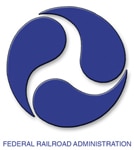
“The U.S. Department of Transportation has made increasing safety at highway-rail grade crossings, especially along routes transporting energy products, one of its top priorities,” said U.S. Transportation Secretary Anthony Foxx. “This money allows the Department to support innovative ideas and solutions developed at the local level, and I encourage states to apply for this funding.”
Highway-rail grade crossings collisions are the second-leading cause of all railroad-related fatalities. Last year, 269 individuals died in these collisions. While the number of fatalities has decreased for the last several decades, this number increased last year for the first time this decade.
Highway-rail grade crossing accidents are frequently the result of a driver’s lack of awareness of a crossing or an oncoming train or a driver’s attempt to “beat the train.” Earlier this year, FRA ramped up its campaign to prevent collisions and save lives at highway-rail grade crossings through greater education, stronger enforcement and smarter engineering. To accomplish this, FRA has developed key partnerships, and has:
- Worked with Google and other technology companies to integrate FRA’s grade crossing location data to provide audio and visual alerts when using turn-by-turn navigation applications;
- Partnered with local law enforcement agencies to increase enforcement at railroad crossings; and
- Supported research on grade crossing technology.
“Most of these deaths are completely preventable, and that is why the Federal Railroad Administration has redoubled its efforts to reverse last year’s upward trend. These funds will allow states to take innovative ideas and make them a reality to increase safety and decrease fatalities,” said FRA Acting Administrator Sarah Feinberg.
In GROW AMERICA, the U.S. Department of Transportation (DOT) has proposed creating new grant program that would make $250 million available to local communities for highway-rail grade crossings as well as other critical rail infrastructure projects. In addition, the Department has proposed continuing Federal Highway Administration’s $220 million per year dedicated grant program for highway rail grade crossing projects.
Earlier this year, DOT released its comprehensive rule that raises the bar on the safety of transporting crude oil by rail. The rule requires stronger tank cars and 21st century electronically controlled pneumatic (ECP) brakes that activate simultaneously on all tank cars, reduce the distance and time needed for a train to stop, and keep more tank cars on the track if a train does derail. DOT has also required that railroads transporting crude oil notify State Emergency Response Commissions of the movement of crude oil through individual states. During the last two years, DOT has taken more than two dozen actions to increase the safety of transporting energy products by rail.
View a copy of the Notice of Funding Availability.
To view education materials, visit Operation Lifesaver’s website, our partner in grade crossing and trespasser safety.
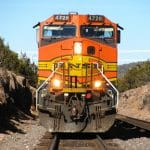 BNSF Railway Co. reported to its customers yesterday that it is experiencing an operational impact due to a track outage caused by wildfires in Essex, Mont.
BNSF Railway Co. reported to its customers yesterday that it is experiencing an operational impact due to a track outage caused by wildfires in Essex, Mont.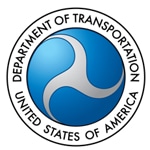 RALEIGH, N.C. — USDOT Secretary Anthony Foxx announced last month that a federally-led regional study will be conducted to develop a shared, workable vision for a Southeast passenger rail network. Secretary Foxx noted that:
RALEIGH, N.C. — USDOT Secretary Anthony Foxx announced last month that a federally-led regional study will be conducted to develop a shared, workable vision for a Southeast passenger rail network. Secretary Foxx noted that: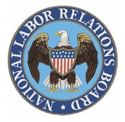 Unions and other labor advocates are brainstorming strategies after a National Labor Relations Board ruling that could strengthen the hand of those at the lowest level of such industries as warehousing, construction, fast food and home health care.
Unions and other labor advocates are brainstorming strategies after a National Labor Relations Board ruling that could strengthen the hand of those at the lowest level of such industries as warehousing, construction, fast food and home health care. Phoenix-area voters on Tuesday approved a comprehensive transportation plan that would significantly increase public spending on light-rail and other transit projects, city officials announced yesterday.
Phoenix-area voters on Tuesday approved a comprehensive transportation plan that would significantly increase public spending on light-rail and other transit projects, city officials announced yesterday.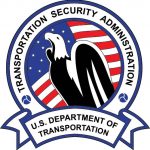 WASHINGTON – U.S. Senators Richard Blumenthal (D-Conn.) and Cory A. Booker (D-N.J.), members of the Senate Committee on Commerce, Science, and Transportation, called on the Transportation Security Administration (TSA) to immediately implement outstanding security and safety improvements to the nation’s passenger rail systems that were mandated in legislation passed by Congress in 2007. In a letter to TSA Administrator Peter Neffenger, Blumenthal and Booker noted the attempted terrorist attack on a Paris-bound train last week in which three Americans successfully subdued the attacker and the need to ensure basic protections for the tens of millions of people who every day rely on America’s public transportation systems.
WASHINGTON – U.S. Senators Richard Blumenthal (D-Conn.) and Cory A. Booker (D-N.J.), members of the Senate Committee on Commerce, Science, and Transportation, called on the Transportation Security Administration (TSA) to immediately implement outstanding security and safety improvements to the nation’s passenger rail systems that were mandated in legislation passed by Congress in 2007. In a letter to TSA Administrator Peter Neffenger, Blumenthal and Booker noted the attempted terrorist attack on a Paris-bound train last week in which three Americans successfully subdued the attacker and the need to ensure basic protections for the tens of millions of people who every day rely on America’s public transportation systems.